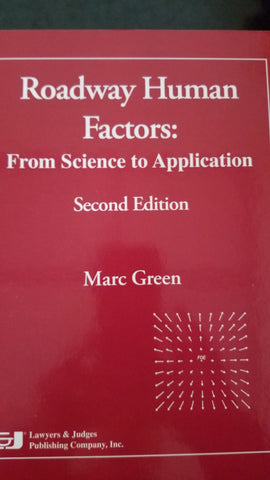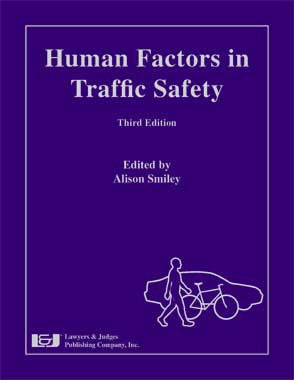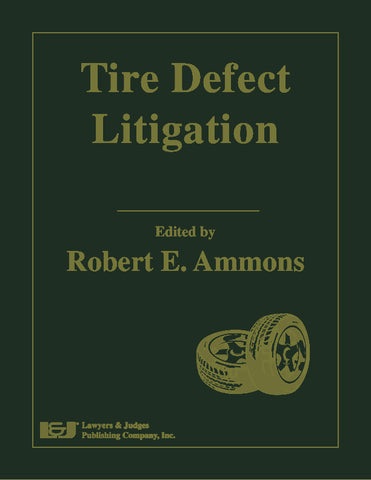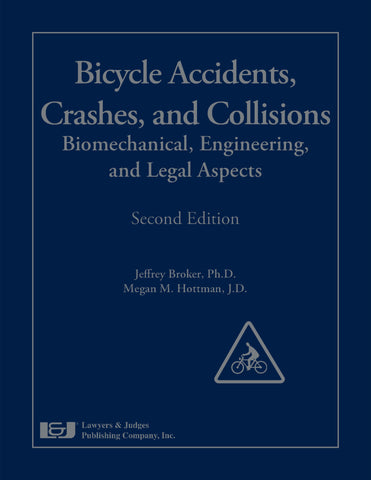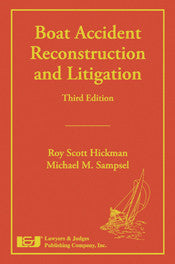
Boat Accident Reconstruction and Litigation, Third Edition
- Author: Roy Scott Hickman, Michael M. Sampsel
- ISBN 10: 1-936360-02-0
- ISBN 13: 978-1-936360-02-4
- Copyright Date Ed: November 8, 2011
- Pages: 512 pages
- Binding Information: Casebound
- Size: 6 ✕ 9 Inches (US)
This updated and revised edition has even more information to help you understand the complexities of boating accidents. In this edition are expanded chapters on boat accident reconstruction, an entirely new chapter on skipper responsibilities, and updated information recreational boating law. Whether you are a beginner or experienced litigator or any expert dealing with a boat accident, the information contained in this excellent resource will save you hours of research time hunting through less complete texts and online services.
If you are a lawyer or an accident reconstructionist, this book will help you find appropriate data, analyze it, and determine cause in a boat accident. The book is a compendium of information useful in litigation dealing with activities in and on the water. The third edition of Boat Accident Reconstruction and Litigation covers everything from the way boats function to how they are designed. It introduces you to fluid mechanics and explains the numerous formulae and other methods used to analyze boat accidents. It even includes an extensive series of appendices of useful Coast Guard regulations and rules.
This book is also available as an eBook. Click here to purchase and download:
Topics include
- Swimmers and personal floatation devices
- Major boating accident case citations
- Safety equipment
- Transportation and marina issues
- Personal watercraft and types of boats
- Maritime law
- Accident reconstruction
- Alcohol
- Product liability issues
- Water skiing
- The attorney-expert relationship
- Skipper responsibilities
- and more
Table of Contents
Chapter 1: Introduction
Chapter 2: Nautical Terminology
2.1 Introduction
2.2 History
2.3 Basic Terms
2.4 Boat or Accident Drawings
2.5 Glossary
Chapter 3: Boats and Boat Operation
3.1 Recreational Boating
3.2 Buoyancy
3.3 Hull Shapes and Behavior
3.4 Center of Buoyancy and Stability
3.5 Manually Powered Boats
3.6 Sailboats
3.7 Sailboards
3.8 Swimmers and Surfers
3.9 Powerboats
3.10 Types of Engines
3.11 Personal Watercraft
3.12 Powerboat Safety Equipment
3.13 Human Factors
3.14 Weather
3.15 Dams
3.16 Boat Operation
A. Introduction
B. Getting Started
C. Boat versus Automobile Operation
D. Boat Motions
E. Education and Licensing of Operators
Chapter 4: Personal Watercraft
4.1 History
4.2 Terminology
4.3 Hull
4.4 Propulsion
4.5 PWC Design
4.6 Rental Market
4.7 Stability
4.8 Operation
4.9 Accidents and Injuries
4.10 Laws and Regulations
Chapter 5: Introduction to Recreational Boating Law
by Jeanne-Marie D. van Hemmen and Sterling Stires
5.1 Introduction
5.2 Maritime Law
5.3 Admiralty Jurisdiction
A. Tort Claims
B. Maritime Contracts
5.4 Practical Implications of Admiralty Jurisdiction
5.5 Substantive Areas of Maritime Law of Interest to Recreational Craft Litigators
A. Standards of Care
1. Passengers
2. Seamen
3. Navigation Rules
4. The Federal Boat Safety Act
B. Burdens of Proof—The Pennsylvania Rule
C. Maritime Strict Product Liability
D. The Shipowners’ Limitation of Liability Act
E. Personal Injury and Wrongful Death Damages
5.6 Procedural Maritime Law Remedies of Interest to Recreational Craft Litigators
A. Maritime Liens and In Rem Liability
B. Rule B Attachment
5.7 Sources of Maritime Law
5.8 Conclusion
Chapter 6: Accident Reconstruction
6.1 Investigation
6.2 Inspection of Boats
6.3 Location of the Accident
6.4 Collisions
6.5 Propeller Information
6.6 Sinking
6.7 Explosions and Fires
6.8 Electrical Accidents
6.9 Reenactments
6.10 Modeling and Computation
6.11 Summary
Chapter 7: Alcohol
7.1 Legal Limits on Intoxication
7.2 Blood Alcohol Content
7.3 Alcohol and Boating
7.4 Summary
Chapter 8: Product Liability Issues
8.1 Injuries
8.2 Sinkings
8.3 Propeller Strikes
8.4 Slips and Falls
8.5 Miscellaneous
8.6 Summary
Chapter 9: The Role of Fluid Mechanics
9.1 Introduction
9.2 Nature of Fluids
9.3 Hydrostatics
9.4 Dimensional Considerations
9.5 Moving Boats and Fluids
9.6 Nondimensional Parameters
9.7 Simple Fluid Mechanics Considerations
9.8 Waves and Wakes
A. Waves
B. Wakes
9.9 Summary
Chapter 10: Regulations and Safety Standards
10.1 Coast Guard Regulations
10.2 Personal Flotation Devices (PFDs)
10.3 Fires and Fire Extinguishers
10.4 Backfire Flame Arrestors
10.5 Ventilation
10.6 Exhaust System and Noise
10.7 Lights
10.8 Navigational Range Lights
10.9 Fog Signals
10.10 Buoys
10.11 Red Right Returning
10.12 Navigation Systems
10.13 Lighthouses
10.14 Anchor Lights, COLREGS and Inland Navigation Rules
10.15 Whistles and Horns
10.16 Illegal Equipment
10.17 Speed Limits
10.18 Federal Regulations
A. Background
B. Scope and Definitions
C. Steering and Sailing
D. Right-of-Way
E. Maneuvering
F. Inland Rules
10.19 Safety Standards or Recommended Practices
10.20 Safety Standards
10.21 Accident Reporting
Chapter 11: Personal Flotation Devices and Fire Extinguishers
11.1 Personal Flotation Devices (PFDs)
11.2 Fires and Fire Extinguishers
11.3 Summary
Chapter 12: Trailers, Marinas and Harbors
12.1 Boat Trailers
12.2 Marinas and Docks
12.3 Summary
Chapter 13: Skin and Scuba Diving
13.1 Snorklers and Skin (Free) Divers
13.2 Scuba Diving
13.3 Equipment Issues
13.4 Types of Diving
13.5 Summary
Chapter 14: Water-Skiing and Towed Water Rides
14.1 The Towed Device
14.2 Water-Skiing
14.3 Equipment and Skiing
14.4 Water-Ski Safety and Responsibilities
14.5 Signaling
14.6 Speed Limits
14.7 Forces on Towed Objects
14.8 Laws Affecting Towed Devices
14.9 Summary
Chapter 15: Carbon Monoxide Poisonings
15.1 General
15.2 Physiology of Poisoning
15.3 Sources of Carbon Monoxide
15.4 Properties and Characteristics of Carbon Monoxide
15.5 Buildup of Carbon Monoxide
15.6 Designing for CO in Boats and Warnings
15.7 CO Detection Systems
15.8 Investigating an Alleged Carbon Monoxide Poisoning
15.9 Summary
Chapter 16: Miscellaneous Topics
16.1 Introduction
16.2 Diver Down Flag
16.3 The Drowning Mechanism
16.4 Temporary Night Blindness
16.5 Use of Statistics in Design Defect Analysis
16.6 Parts Usage Data
16.7 Large Block V-8 Engines
16.8 Engine Repairs and Maintenance
16.9 The American Boat and Yacht Council
16.10 National Marine Manufacturers Association
16.11 Boating Industry Status
16.12 Internet Resources
16.13 Summary
Chapter 17: Skipper Responsibilities
17.1 Introduction
17.2 Duties and Responsibilities Quotations
17.3 Discussion
17.4 Towables
17.5 Summary
Chapter 18: Comments on the Attorney-Expert Relationship
18.1 Introduction
18.2 Tests for Expert Testimony
18.3 Finding and Hiring the Expert
A. Finding the Expert
B. Fees and Contracts
1. General considerations
2. Contingent fees
3. Pro bono work
18.4 Working with an Expert
A. Involve the Expert
B. Meetings with Experts
C. File Preparation and Organization
D. Tips for Working with the Lawyer
18.5 Depositions
A. General Considerations
B. Video Depositions
18.6 Dealing with Opposing Experts
A. The Role of Your Expert
B. Deposing the Opposing Experts
18.7 Trial
A. General Considerations
B. Qualifying the Expert
C. Arguments Concerning an Expert Witness’s Opinions
D. Cross-Examining the Opposing Expert Witness
18.8 Tips for Experts
A. Ethical Considerations
B. Testifying at Trial
18.9 Summary
Appendix A: Selections from Title 46, U.S. Code
Appendix B: International Regulations for Preventing Collisions at Sea, 1972 (72 COLREGS)
Appendix C: Inland Navigation Rules
Appendix D: U.S. Coast Guard Operating Regulations, Operating a Vessel while Intoxicated
Appendix E: Selected U.S. Coast Guard Regulations
Appendix F: Useful Publications on Boats and Boating
Appendix G: Boating-Related Organizations

